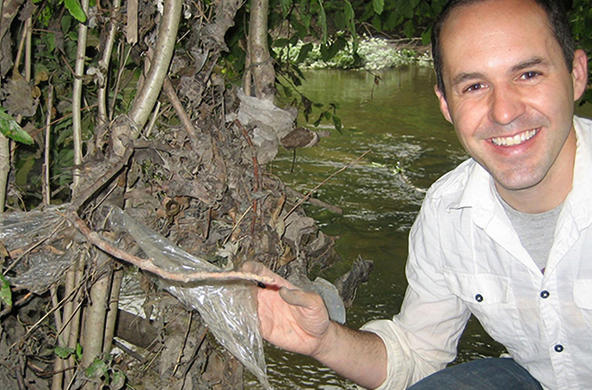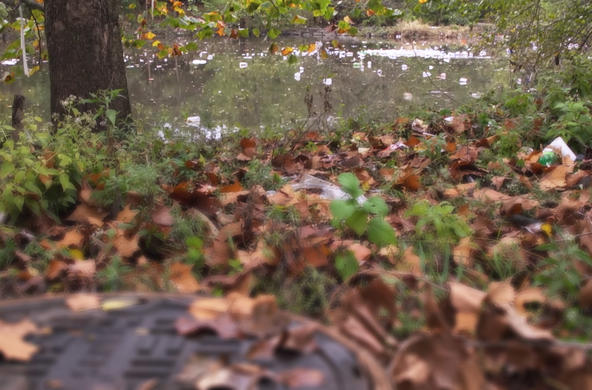With increasing frequency, we hear of the accumulation of plastic waste and its persistence in the global environment. This is not a newly emerging environmental problem; it began 70 years ago with the proliferation of plastics following World War II. One study of freshwater fish found no microplastics in specimens collected before 1950 and increasing concentrations since that time. Plastic materials of varying size are found in the gut of seabirds worldwide, often in specimens that are not close to obvious human sources. Plastic fishing line is widely recognized as harmful to whales and other large marine animals. We find lots of it along our shoreline in Maine.
Plastic production amounts more than to 400 million tons annually (= 400 Tg/yr), with polyethylene and polypropylene accounting for more that half. Because so much of the production is used in packaging, about half of the annual production becomes waste. Some plastic products are collected recycled (6%) or incinerated (20%), some are buried in landfills, and some are allowed to disperse in nature without containment. Most plastics are degraded by sunlight and abrasion from their original forms to small particles and fibers, often called microplastics. Smaller plastic particles are known as nanoparticles, which are less than 1 μm and can enter cells directly.
Estimates of the amount plastic delivered to the sea by rivers are controversial and vary over a wide range. Several studies suggest that riverflow transports as much as 2 Tg/yr of plastic material, but a recent study suggests that number is much too high, and the real flux of microplastics could be as low as 0.006 Tg/yr. The lower number yields a mean residence time of 2.4 years for plastic floating at the ocean surface, while the higher estimate suggests that most plastic is degraded or disappears from seawater rather rapidly. We know essentially nothing about the fractions that completely decompose in seawater, sink to the sediments, or are taken up by biota. And of the latter, we see harmful effects of large plastic materials on sea animals, but we know little about the effects of microplastics on organisms, including us.
Plastic pollution is not a new problem, and we have much to do to improve our understanding of the amount and fate of plastics at the Earth’s surface.
References
Hou, L. and 5 others. 2021. A fish tale: a century of museum specimens reveals increasing microplastic concentrations in freshwater fish. Ecological Applications doi 10.1002/eap.2320
Lim, X. 2021. Microplastics are everywhere—but are they harmful. Nature 593: 22- 25
Stubbins, A., K.L. Law, S.E. Monoz, T.S. Bianchi and L. Zhu. 2021. Plastics in the Earth System. Science 373: 51-55
Weiss, L., and 7 others. 2021. The missing ocean plastic sink: Gone with the rivers. Science 373: 107-111.






